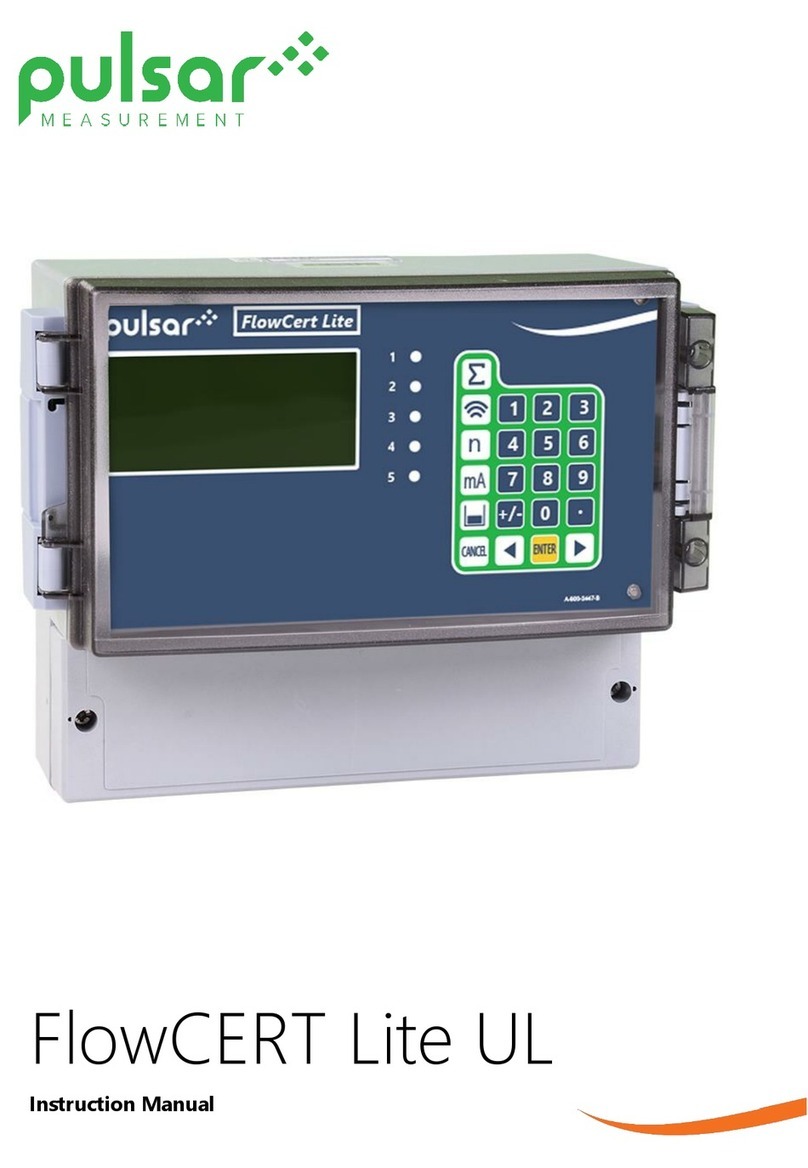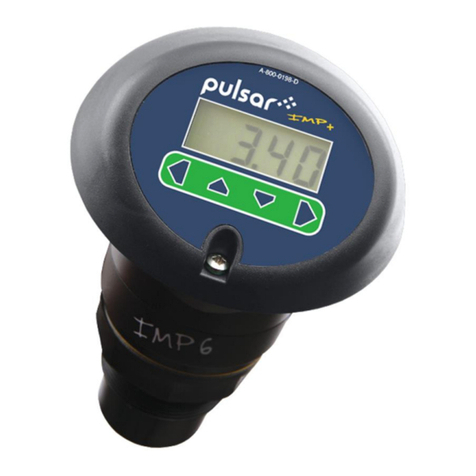
PULSAR MEASUREMENT
3
CONTENTS
CONNECTIONS:................................................................................................................................................................................................................................................4
KEYPAD SYSTEM ..............................................................................................................................................................................................................................................6
MENU SYSTEM .................................................................................................................................................................................................................................................7
ICONS..................................................................................................................................................................................................................................................................8
MESSAGE ICON................................................................................................................................................................................................................................................9
STATUS................................................................................................................................................................................................................................................................9
PASSWORD..................................................................................................................................................................................................................................................... 11
MENU SELECTIONS...................................................................................................................................................................................................................................... 11
UNITS/MODE ................................................................................................................................................................................................................................................. 12
SET UP .............................................................................................................................................................................................................................................................. 14
CALIBRATION................................................................................................................................................................................................................................................. 17
RELAY PARAMETERS.................................................................................................................................................................................................................................... 19
DATA LOGGING............................................................................................................................................................................................................................................. 20
COMMUNICATION (Optional).................................................................................................................................................................................................................. 22
SPECIAL FUNCTIONS................................................................................................................................................................................................................................... 24
TYPICAL SE16A SENSOR INSTALLATION .............................................................................................................................................................................................. 27
TYPICAL SE16B SENSOR INSTALLATION............................................................................................................................................................................................... 28
TYPICAL SE16C SENSOR INSTALLATION .............................................................................................................................................................................................. 29
SENSOR MOUNTING................................................................................................................................................................................................................................... 35
2 or 4 CROSS INSTALLATION OVERVIEW – SE16A Transducers TMK-A1 Kit............................................................................................................................ 36
2 OR 4 CROSS INSTALLATION OVERVIEW – SE16B TMK-B1 Kit................................................................................................................................................... 39
1 CROSS INSTALLATION OVERVIEW – SE16B Transducers TMK-B1 Kit ..................................................................................................................................... 43
2 OR 4 CROSS INSTALLATION OVERVIEW – SE16B Transducers TMK-B21 or TMK-B22 Kit ............................................................................................... 50
1 CROSS INSTALLATION OVERVIEW – SE16B Transducers TMK-B21 or TMK-B22 Kit .......................................................................................................... 54
2 CROSS INSTALLATION OVERVIEW – SE16C Transducers TMK-C1 or TMK-C2 Kit .............................................................................................................. 61
1 CROSS INSTALLATION OVERVIEW – SE16C Transducers TMK-C1 or TMK-C2 Kit .............................................................................................................. 64
SENSOR MOUNTING/COUPLING RECOMMENDATIONS................................................................................................................................................................ 70
ENCLOSURE INSTALLATION ..................................................................................................................................................................................................................... 71
FIELD TROUBLESHOOTING........................................................................................................................................................................................................................ 72
COMMON QUESTIONS AND ANSWERS............................................................................................................................................................................................... 75
APPLICATIONS HOTLINE............................................................................................................................................................................................................................ 77
PRODUCT RETURN PROCEDURE............................................................................................................................................................................................................. 77
SPECIFICATIONS ........................................................................................................................................................................................................................................... 81
PIPE CHARTS .................................................................................................................................................................................................................................................. 84
APPENDIX C – Liquid Speed of Sound................................................................................................................................................................................................... 89
Appendix D..................................................................................................................................................................................................................................................... 97
IMPORTANT NOTE: This instrument is manufactured and calibrated to meet product specifications. Please read this manual carefully before
installation and operation. Any unauthorized repairs or modifications may result in a suspension of the warranty.
If this product is not used as specified by the manufacturer, protection may be impaired.
Available in Adobe Acrobat pdf format
































